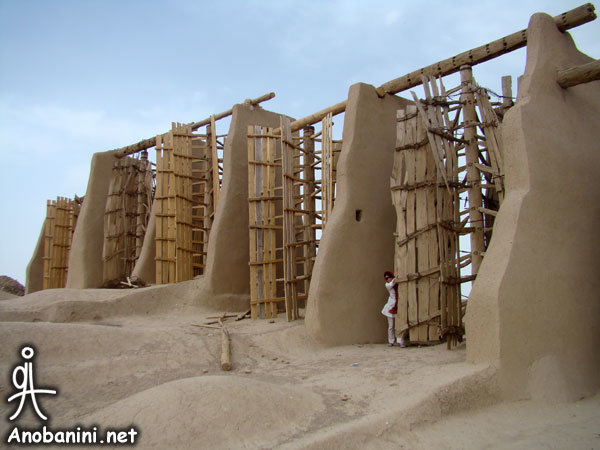Iranians pioneers of wind-power harnessing

TEHRAN – Based on historical records Iranians indigenous to eastern parts of the country first harnessed the wind power by inventing and using vertical-axis windmills in the mid-seventh century CE.
“The earliest-known references to windmills are to a Persian millwright in 644 CE and to windmills in Seistan [Siistan], Iran, in 915 CE,” the Encyclopedia Britannica asserts.
Nashtifan region in northeastern Iran and Sistan situated its southward are amongst the heavens for millwrights for near one and half a millennium.
The so-called ‘120-day wind’ seasonally has always bestowed its blessings to inhabitants in Sistan, initially in a disguised feature.
Nearly all mills scattered in the aforesaid areas are of the horizontal-mill type. They drive a single pair of stones directly, without the use of gears, and the design is derived from the earliest Persian water mills.
Currently, several of the ancient Iranian windmills have been fully overhauled and are in use so visitors can be well acquainted with the subtle yet simple mechanism in person.
In early second millennium, some Eastern and Western states acquired the technology of making mills from Persia, though the prototype design constantly underwent amendments in the course of time.
Britannica also notes that Persian millwrights, taken prisoner by the forces of Genghis Khan (c. 1162 – 1227), were sent to China to instruct in the building of windmills; their use for irrigation there has lasted ever since.
The use of windmills was increasingly widespread in Europe from the 12th century until the early 19th century. However, the rapid demise of mills began in Europe following World War I with the development of the internal-combustion engine and the spread of electric power.
PHOTO: An undated picture shows a number of well-preserved vertical-axis windmills which have been in use for several centuries in the Nashtifan region, northeastern Iran.
AFM/MG
